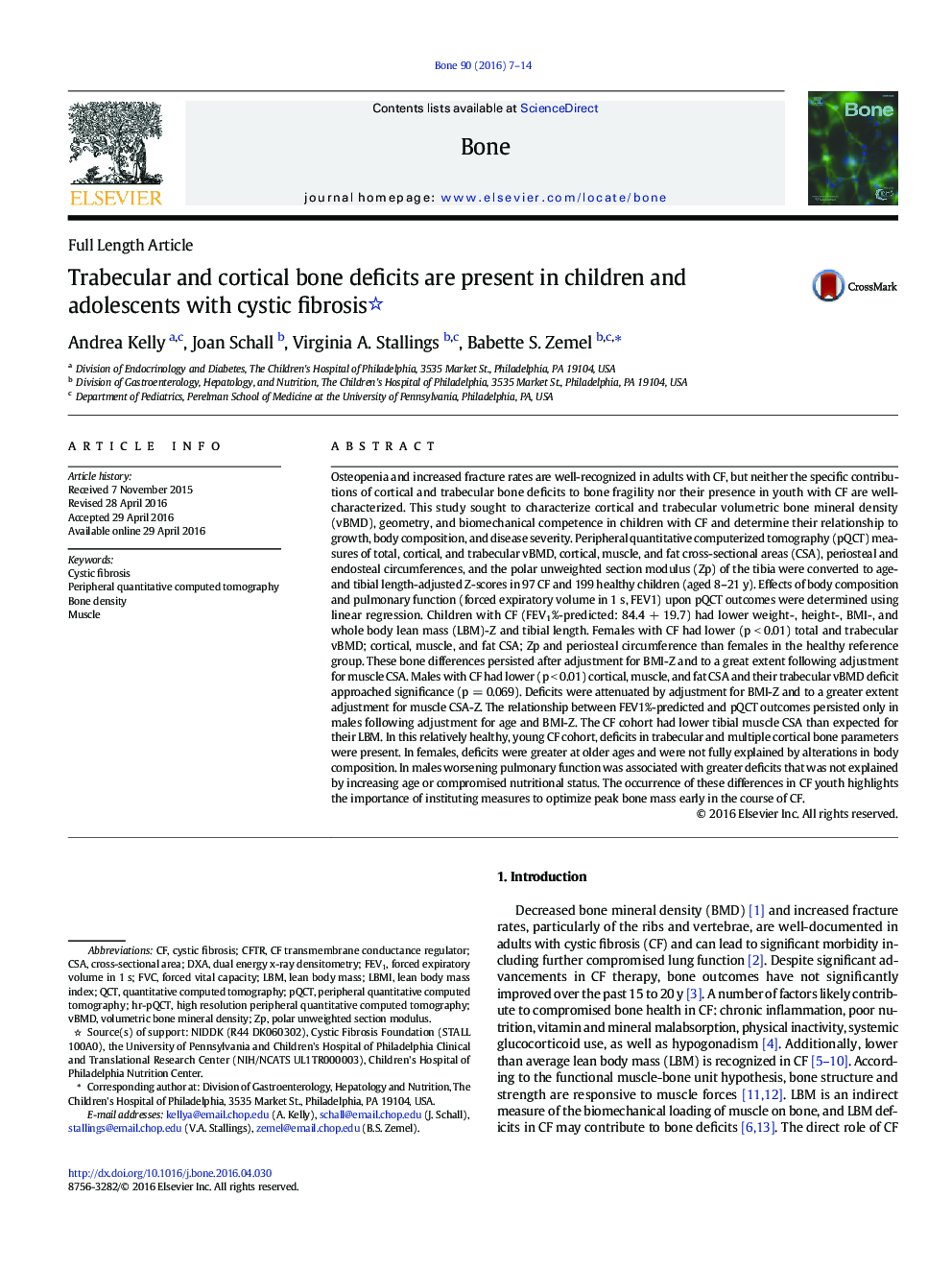| Article ID | Journal | Published Year | Pages | File Type |
|---|---|---|---|---|
| 5888798 | Bone | 2016 | 8 Pages |
â¢Relatively healthy children and adolescents with CF display deficits in trabecular and multiple cortical bone parameters.â¢In females with CF, bone deficits are greater at older ages and not fully explained by alterations in body composition.â¢In males with CF, worse pulmonary function is associated with greater bone deficits.
Osteopenia and increased fracture rates are well-recognized in adults with CF, but neither the specific contributions of cortical and trabecular bone deficits to bone fragility nor their presence in youth with CF are well-characterized. This study sought to characterize cortical and trabecular volumetric bone mineral density (vBMD), geometry, and biomechanical competence in children with CF and determine their relationship to growth, body composition, and disease severity. Peripheral quantitative computerized tomography (pQCT) measures of total, cortical, and trabecular vBMD, cortical, muscle, and fat cross-sectional areas (CSA), periosteal and endosteal circumferences, and the polar unweighted section modulus (Zp) of the tibia were converted to age- and tibial length-adjusted Z-scores in 97 CF and 199 healthy children (aged 8-21 y). Effects of body composition and pulmonary function (forced expiratory volume in 1 s, FEV1) upon pQCT outcomes were determined using linear regression. Children with CF (FEV1%-predicted: 84.4 + 19.7) had lower weight-, height-, BMI-, and whole body lean mass (LBM)-Z and tibial length. Females with CF had lower (p < 0.01) total and trabecular vBMD; cortical, muscle, and fat CSA; Zp and periosteal circumference than females in the healthy reference group. These bone differences persisted after adjustment for BMI-Z and to a great extent following adjustment for muscle CSA. Males with CF had lower (p < 0.01) cortical, muscle, and fat CSA and their trabecular vBMD deficit approached significance (p = 0.069). Deficits were attenuated by adjustment for BMI-Z and to a greater extent adjustment for muscle CSA-Z. The relationship between FEV1%-predicted and pQCT outcomes persisted only in males following adjustment for age and BMI-Z. The CF cohort had lower tibial muscle CSA than expected for their LBM. In this relatively healthy, young CF cohort, deficits in trabecular and multiple cortical bone parameters were present. In females, deficits were greater at older ages and were not fully explained by alterations in body composition. In males worsening pulmonary function was associated with greater deficits that was not explained by increasing age or compromised nutritional status. The occurrence of these differences in CF youth highlights the importance of instituting measures to optimize peak bone mass early in the course of CF.
